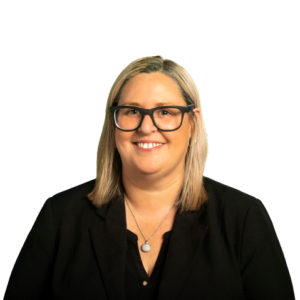Understanding Back Injury Payouts in Australia
If you’ve experienced a back injury due to another person’s or entity’s negligence, you may have grounds to file an injury compensation claim. This article
Gerard Malouf & Partners Manage Cases For Clients Across All Areas Of Personal Injury Law, Inheritance Disputes And Superannuation Disputes.
Gerard Malouf & Partners Have Provided Friendly, Experienced Legal Advice To Communities Across Australia For Over 35 Years. Our Personal Injury Lawyers Have Taken On Ten’s Of Thousands Of Cases And We Are Proud To Have Won Billions Of Dollars For Our Clients.
Read Our Latest Articles, Case Studies Or Commonly Asked Questions Concerning Your Legal Claims And Compensation Law.
It was alleged on behalf of the child plaintiff that they had suffered hypoxic ischaemic brain damage as a result of the defendant hospital’s failures. The evidence obtained on behalf of the plaintiff was that, the plaintiff’s mother had attended on the defendant hospital with a history of regular, painful contraction and on admission intermittent cardiotocographic (CTG) monitoring was commenced to record the plaintiff’s heart rate and the mother’s uterine activity.
It was further alleged that after 12 hours of intermittent monitoring the CTG tracings were starting to reveal abnormalities and over the ensuing 2 hours, were progressively becoming more abnormal. Despite this, no action was taken to deliver the plaintiff via an emergency caesarean.
At the time of birth, the plaintiff required both Ventilatory and cardiac assistance with cardiopulmonary resuscitation. Arterial gas of the umbilical cord revealed a profound degree of foetal acidaemia. The plaintiff was required to be transferred to specialised neonatal hospital for ongoing care.
Our expert was damning in relation to the inaction of the attending medical staff. Indicating that the plaintiff’s delivery should have occurred some 3 hours prior to the plaintiff’s actual time of delivery. The neonatologist found that it was clear that the plaintiff had sustained a hypoxic ischaemic brain injury and that that injury was caused by the extensive delay in the delivery of the plaintiff.
On the basis of these experts’ opinions proceedings were commenced on behalf of the infant plaintiff in the Supreme Court of NSW. The defendant hospital initially denied that they had done anything wrong. We believe that based on the expert opinions obtained on behalf of the infant plaintiff and the veracity of the experts’ findings. The defendant hospital after 2 years ultimately amended their Defence to the claim, conceding that they had in fact failed the infant plaintiff.
Dispute conceding that they had breached their duty of care to the infant plaintiff, the defendant hospital maintained their objection to the damages (compensation) sought on behalf of the plaintiff.
In preparing the argument on damages, we obtained a number of expert opinions, which covered issues such as the care and assistance that the infant plaintiff would require for the remainder of his life, the infant plaintiff’s ongoing treatment requirements, ongoing assistive technological aides needed in day-to-day life. Reports were required from experts including Rehabilitation Paediatrician, Physiotherapist, Paediatrician, Psychologists, Occupational Therapist and a Speech Therapist.
The defendant’s position in relation to the plaintiff’s claim for damages was combative. Attempts were made to settle the claim with the defendant on two separate occasions. The main issue between the parties during negotiations was the level of care that the infant plaintiff would require and how that care should be provided. In this regard, the defendant’s position was that the infant plaintiff’s parents should be expected to meet all of the infant plaintiff’s care for a majority of his life, even into adulthood, despite the fact that the infant plaintiff’s parents would unlikely be able to provide the level of care during their old age.
The defendant’s approach to the issue of damages ultimately abated, in our view, given the staunch stance taken by the experts retained by use in support of the infant plaintiff’s claim.
The settlement of this matter was required to be approved by a Judge of the Supreme Court and this occurred recently. With the attending Judge commending the parties on the settlement reached, and thereby ensuring that this young family was able to finalise the matter and provide a secure future for the child.

Public liability refers to the responsibilities owners or occupants of a public space have to protect anyone who enters. If the owners or occupants fall short of these responsibilities, resulting in an injury, a case for compensation can be made.
Some of the most common incidents covered by public liability law include:
Following an initial meeting, the first task will be to establish the general facts of the case. This will include your medical diagnosis, which will need to be confirmed and documented by a doctor; and proof that the person or company at fault owed you a duty of care, which will need to be demonstrated. Together, this will show that your injury occurred when they breached that duty of care.
From there a further investigation will proceed—contacting and interviewing witnesses, speaking with expert consultants, and more—all in order to bolster the strength of your case even further. Only once this process is complete, and your claim can be demonstrated and proven in full, will the process move on to the next step.
Public liability claims enable you to recoup the financial and emotional costs of suffering an injury due to someone else’s negligence. Defendants regularly offer monetary settlements to claimants, particularly if they acknowledge liability and believe they would lose in court.
But should you accept the settlement or proceed to the later stages of litigation instead, where a judge will have the final decision? Every case is different, but here are some of the factors you may wish to consider before making your choice:
If you’ve experienced a back injury due to another person’s or entity’s negligence, you may have grounds to file an injury compensation claim. This article
Case Overview Our client presented to a vascular surgeon, seeking treatment of her varicose veins in her right leg. Following the surgeon’s recommendation, our client
Case Overview A woman from Green Valley was a passenger in a car when the driver lost control of the vehicle, leading to a collision
Case Overview At the time of her injury, our client was working as a cleaner at a private residence in Kurrajong. During the course of
Case Overview We acted for a client from Western Sydney who was involved in a serious motor vehicle accident. The other driver collided into our
Case Overview We acted for a client from Coffs Harbour who was involved in a serious motor vehicle accident. The driver failed to give way




Your location is currently:
Please wait while you are redirected to the right page...